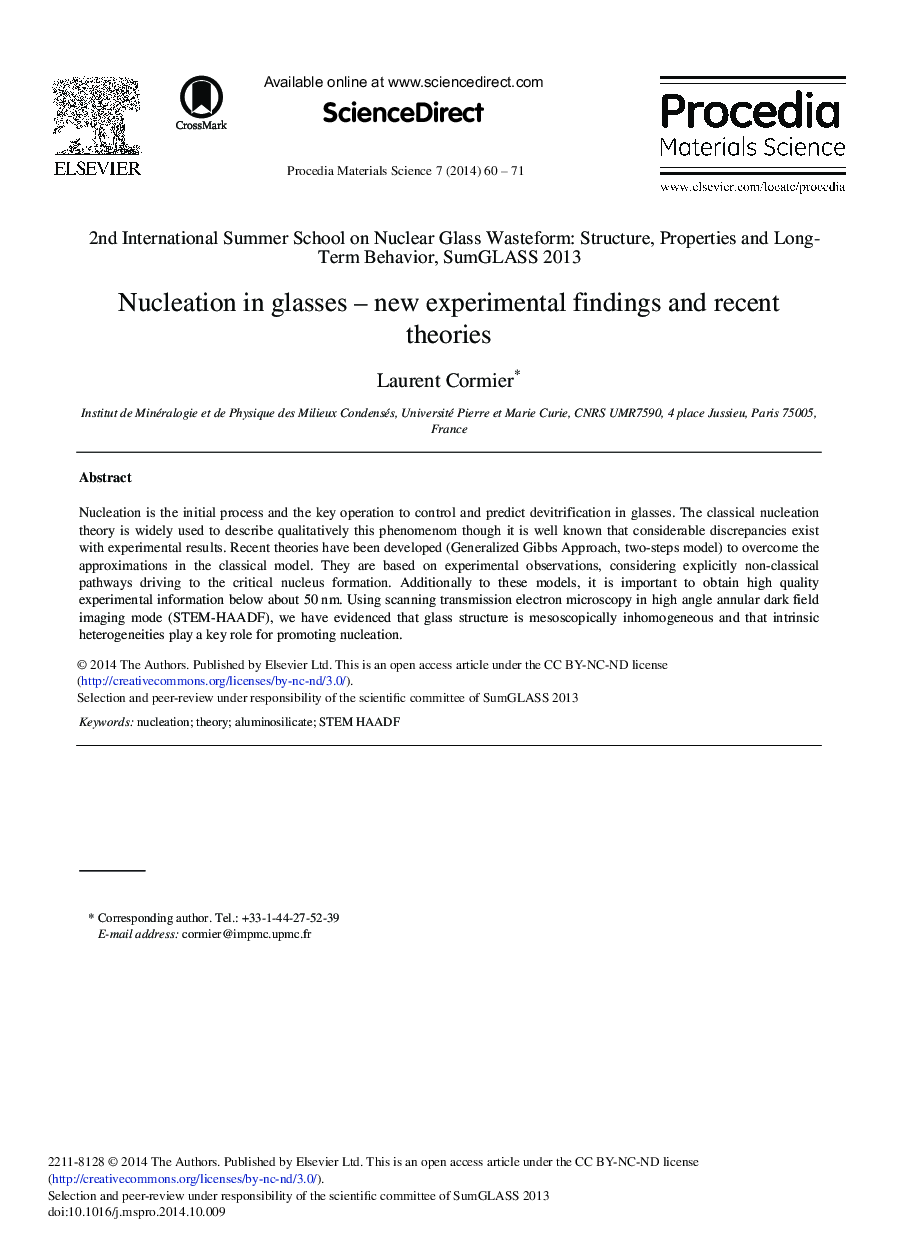| Article ID | Journal | Published Year | Pages | File Type |
|---|---|---|---|---|
| 1634224 | Procedia Materials Science | 2014 | 12 Pages |
Nucleation is the initial process and the key operation to control and predict devitrification in glasses. The classical nucleation theory is widely used to describe qualitatively this phenomenom though it is well known that considerable discrepancies exist with experimental results. Recent theories have been developed (Generalized Gibbs Approach, two-steps model) to overcome the approximations in the classical model. They are based on experimental observations, considering explicitly non-classical pathways driving to the critical nucleus formation. Additionally to these models, it is important to obtain high quality experimental information below about 50 nm. Using scanning transmission electron microscopy in high angle annular dark field imaging mode (STEM-HAADF), we have evidenced that glass structure is mesoscopically inhomogeneous and that intrinsic heterogeneities play a key role for promoting nucleation.
